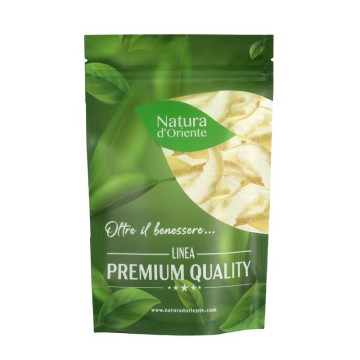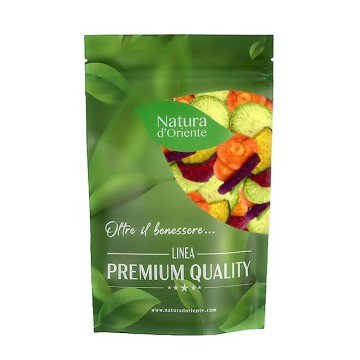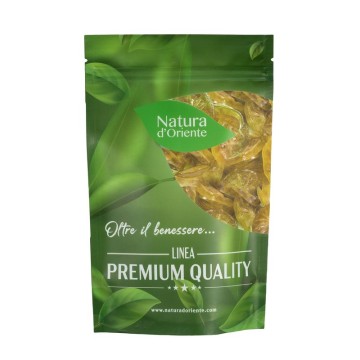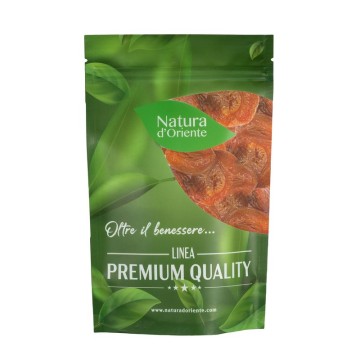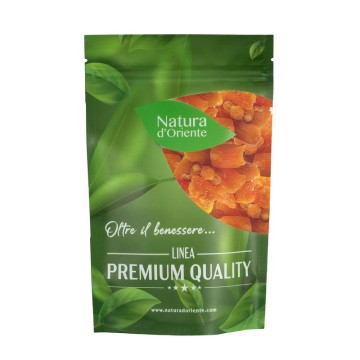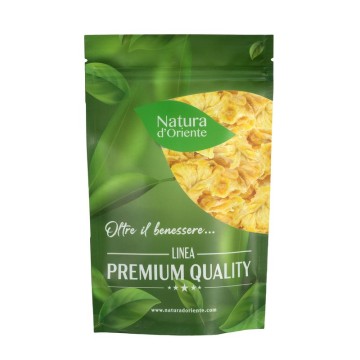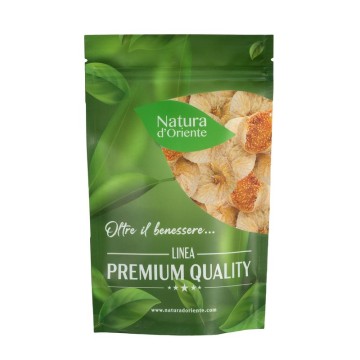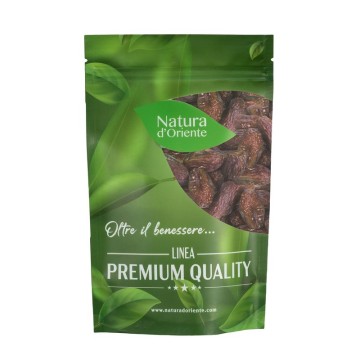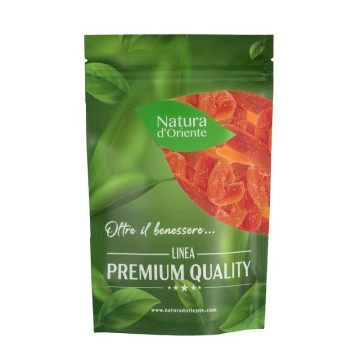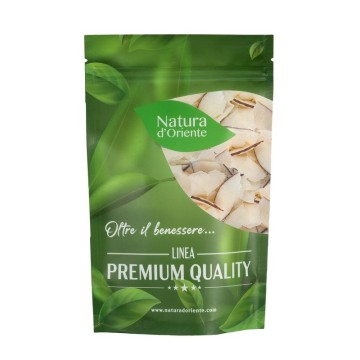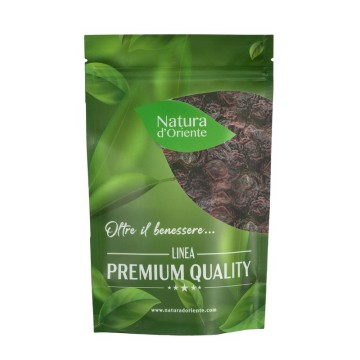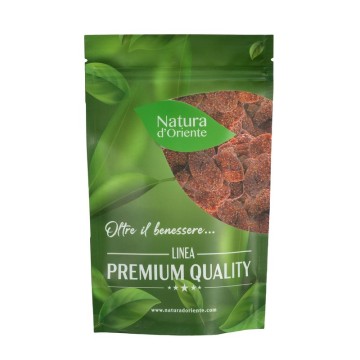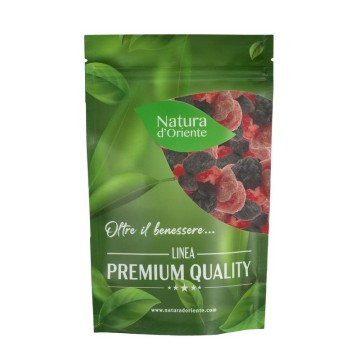Kumquat dehydrated
These small golden yellow fruits delight with an unusual and delicate taste, similar to that of a mandarin with acidic notes of lemon. The skin, rather thick, together with the pulp contains different nutritional properties, let's see what they are.
Dried kumquat: properties and benefits
Kumquat is a source of many vitamins and minerals. Some of them are present in the peel of the dried fruit, which preserves all the trace elements, and makes vitamins C, E, B, beta-carotene available for vitamin A.
In addition, the chemical composition of kumquat also includes mineral elements such as potassium, calcium, phosphorus, zinc, magnesium, copper, manganese, selenium and iron. In addition to fiber and pectin. Kumquat, even in the dried version, is still rich in antioxidants and fatty acids.
The main advantage of this fruit, compared to other citrus fruits, is that it does not contain nitrates. The kumquat is unique in its composition. The benefits of this dry are so many, as dehydrated Kumquat can have a positive effect on the body's cleansing process of toxic substances. In Asian countries, it is used as an excellent remedy for relieving symptoms of excess alcohol.
The dietary fibers inside the fruit regulate the digestive process, relieve stomach cramps and eliminate the unpleasant condition of abdominal bloating.
Due to the high content of flavonoids and antioxidants, Kumquat has a positive effect on the body in the process of combating aging.
The beneficial effects are also possible for strengthening the immune system, helping in the fight against flu and other inflammatory states.
These dried Chinese mandarins can help in reducing blood cholesterol, normalize blood pressure, improve the functioning of the heart muscle.
Riboflavin contained in kumquat improves metabolism and provides excellent energy to the human body. The antioxidant properties can help in the fight against arthritis, increase hemoglobin in the blood and strengthen bone tissue.
The part that contains a lot of vitamin C is the skin of the kumquat,
The fruit also contains essential oils and terpenes, used in ancient times for flu states through their antiseptic properties. In Chinese medicine, dried citrus fruits were often used in the treatment of colds, making healing broths and aromatic drinks from them.
D-limonene, a substance contained in Kumquat and citrus peels, is the subject of research for its beneficial anti-inflammatory properties, and as a natural element suitable for the prevention of stomach acid, regulating the production of juices gastric.
Excellent in Kumquat is the content of micronutrients in mineral salts, represented by potassium, sodium, iron, magnesium and calcium. These are useful elements after physical exertion, to counteract fatigue and nervous tension.
Origins and History of cultivation
Kumquat is a sweet and sour fruit originally from China, testified by the first descriptions in the 12th century, and has long been cultivated in Japan as well. They have been a symbol of winter holidays for centuries, and are used whole or crushed for their aromatic and digestive properties, and also to combat colds and infections in traditional oriental medicine.
This fruit arrived in Europe in 1846 thanks to the interest of botanist Robert Fortune, a member of the London Horticultural Society and was classified under the genus Citrus.
Later, in 1915, it was moved to the genus Fortunella. Kumquat is currently cultivated in the East and South-East Asia as per tradition, but also in Europe especially in Greece, in the southern United States (Florida) and in the Middle East. In Italy, the Kumquat is found in Liguria.
The fruit is totally edible, and is also used for the preparation of candied fruit, liqueurs or jams, including the peel.
Plant and Fruit
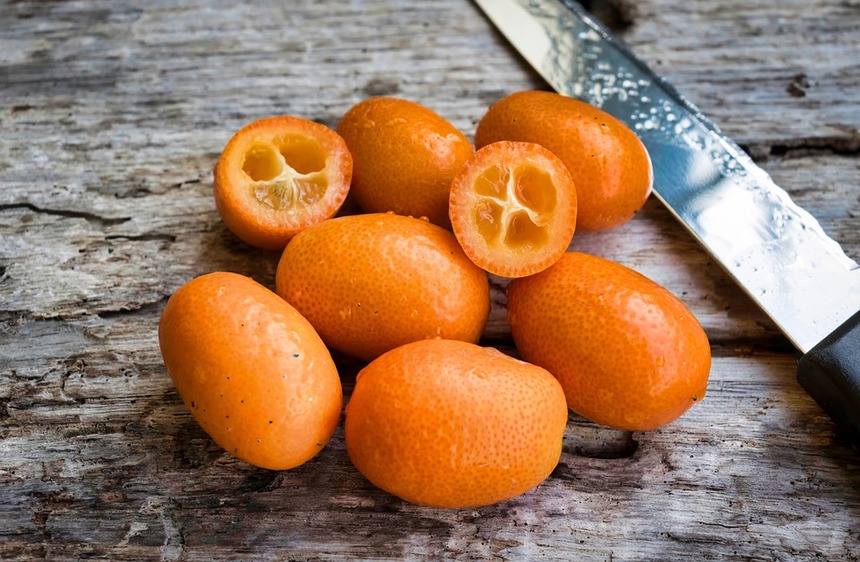 Botanically, the Kumquat plant is Fortunella margarita (oval fruit) or Fortunella japonica (round fruit, defined as Japanese mandarin).
Botanically, the Kumquat plant is Fortunella margarita (oval fruit) or Fortunella japonica (round fruit, defined as Japanese mandarin).
It is a citrus fruit belonging to the Rutaceae family, an evergreen shrub that is suitable for cultivation in the garden and also in pots, and requires warm temperatures from 25 ° C to 38 ° C. In fact, it can even resist frost, in fact it also grows in regions where it is too cold for other citrus species.
It can reach a height of 2 - 3 meters, through slow growth, and flowering cycles ranging from spring to summer, with white flowersi and perfumed.
The fruits of the Kumquat are the so-called small mandarins, about 3 centimeters in diameter, which arrive at the end of November and last all winter in their maturation. The peel is very thin, and the sweet and sour taste .
Nutritional values of dehydrated Kumquat
This dehydrated fruit contains about 360 Kcal per 100 grams, does not contain fat , provides minerals, vitamins, proteins (1.9 g / 100 g) and fiber (about 6 g / 100 g)
The nutritional properties of dried Kumquat show excellent levels of vitamin C (about 4 mg / 100 g) and vitamin A (11 mcg).
In the dried version, Kumquat makes available minerals such as potassium (about 795 mg / 100g), calcium (about 70 mg / 100 g), magnesium (about 20 mg / 100 g) , phosphorus (about mg / 100 g), iron (about 2.72 mg / 100 g) and riboflavin (about 0.1 mg / 100 g).
How to consume dehydrated Kumquat in the kitchen or as a snack
Dried citrus fruits are usually used as ingredients for decorations, cocktails, quick snacks.
Dried Kumquats, also due to their shape of "candy", can decorate cakes, ice cream, cupcakes, soufflés, muffins and so on. They are added as ingredients in some exotic salads , and can create an unusual flavor in sauces and around meat dishes.
The sliced version of the dehydrated Kumquat is perfect as an energy snack, or to be added to yogurt and fruit and cereal mixes for breakfast or snack. Dried Kumquat is also ideal for making energy bars, or for adding to teas and infusions.
Dried Kumquats: Side Effects and Contraindications
There are no particular contraindications to taking Kumquat in the correct doses. We know, however, that like other nuts, Kumquat contains sugars, not recommended for those with high blood sugar levels and suffering from diabetes.
Excessive use is not recommended even for those suffering from chronic diseases of the kidneys and urinary tract, allergies to citrus fruits.
In large doses, the dried Green Kumquat could cause problems for those suffering from increased acidity of gastric juice and gastritis.

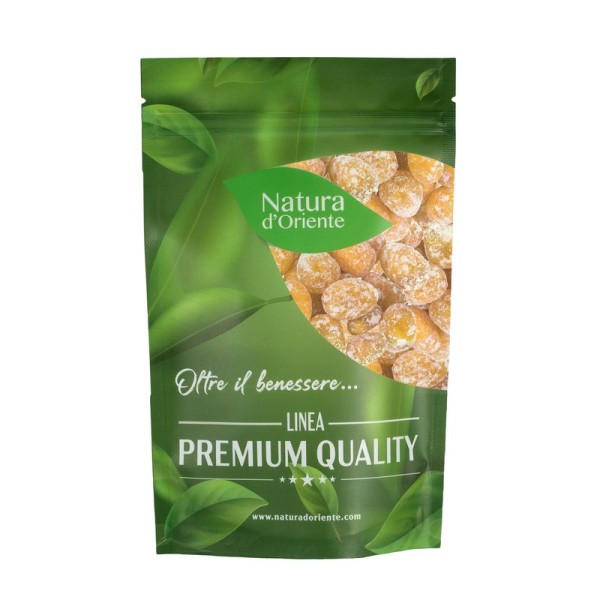









 No reward points for this product.
No reward points for this product.
 Botanically, the Kumquat plant is Fortunella margarita (oval fruit) or Fortunella japonica (round fruit, defined as Japanese mandarin).
Botanically, the Kumquat plant is Fortunella margarita (oval fruit) or Fortunella japonica (round fruit, defined as Japanese mandarin).